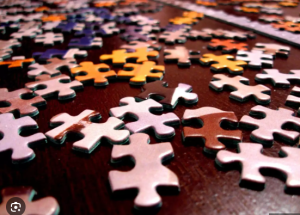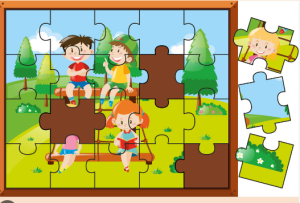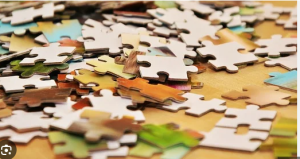Introduction (150 words): Puzzle games serve as captivating portals into worlds where logic, strategy, and creativity intertwine. From the classic enigmas of Tetris to the complex riddles of Portal, these games offer more than just entertainment—they challenge our minds, fostering critical thinking and problem-solving skills. This article delves into the essence of puzzle games, exploring the fundamental mechanics and the diverse experiences they offer.
Understanding Puzzle Game Mechanics (400 words): At their core, puzzle games revolve around challenges that demand mental prowess. These challenges manifest in various forms—jigsaw puzzles, spatial reasoning tasks, pattern recognition, and more. For instance, match-three games like Bejeweled require players to align similar pieces, while Sudoku engages logical deduction to fill a grid without repetition.
Exploring Diverse Puzzle Genres (600 words): Puzzle games span a multitude of genres, each offering a unique experience. Adventure puzzlers, exemplified by titles like Myst or The Witness, immerse players in mysterious worlds brimming with interconnected puzzles. Physics-based puzzles, such as the acclaimed Bridge Constructor series, task players with engineering solutions to overcome obstacles.
The Role of Creativity and Strategy (500 words): Successful puzzle-solving often involves thinking outside conventional boundaries. Creative thinking plays a pivotal role—players devise unconventional approaches, experimenting with various solutions until they crack the puzzle’s code. Moreover, strategic planning and foresight become crucial, especially in games like Monument Valley, where manipulating perspectives leads to solutions.
The Psychological Appeal of Puzzle Challenges (400 words): The allure of puzzle games extends beyond their gameplay mechanics. They tap into psychological facets, triggering a sense of accomplishment upon conquering a particularly challenging level. The feeling of ‘aha’ moments and the satisfaction of overcoming obstacles contribute to the addictive nature of these games.
Community and Collaborative Puzzle Solving (350 words): In recent years, puzzle games have embraced collaborative elements, fostering communities where players share strategies, hints, and solutions. Platforms like Reddit and Discord host dedicated communities, enabling players to seek assistance or engage in discussions, enhancing the overall gaming experience.
Conclusion (200 words): Puzzle games stand as a testament to the power of mental agility and creativity. Their diverse nature not only entertains but also cultivates problem-solving skills, shaping the way we approach challenges in our daily lives. As these games continue to evolve, their enduring appeal remains a testament to their timeless charm.
Introduction: Exploring the Fascinating World of Puzzle Games
Puzzle games encompass a vast universe of challenges, from brain-teasing riddles to complex spatial arrangements, captivating millions of gamers worldwide. These games are not just about solving problems; they encompass strategy, creativity, and an engaging storyline. In this comprehensive guide, we’ll delve into the multifaceted nature of puzzle games, exploring the various activities and strategies that define these captivating gaming experiences.
Understanding Puzzle Game Mechanics
At the core of puzzle games lie diverse mechanics that shape gameplay. Some games rely on matching patterns or colors, while others test players’ spatial reasoning through intricate mazes or challenges. Understanding these mechanics is crucial as it forms the basis for strategizing and solving the puzzles presented. Observing patterns, analyzing clues, and employing logic are common threads across most puzzle games.
Types of Puzzle Games and Their Gameplay
Puzzle games come in various shapes and sizes, catering to different preferences and skill levels. For instance, “Match-3” games like Bejeweled involve aligning similar items in rows or columns to clear the board. Meanwhile, adventure-based puzzles such as The Witness challenge players with complex environmental conundrums, requiring keen observation and critical thinking.
Problem-Solving Strategies in Puzzle Games
Successful navigation through puzzle games often requires a blend of strategies. One effective method involves breaking down larger challenges into smaller, manageable tasks. This approach helps in maintaining focus while preventing overwhelm. Additionally, trial-and-error is a common strategy, allowing players to experiment and learn from their mistakes.
Utilizing Logic and Critical Thinking
Logic and critical thinking are foundational skills in puzzle-solving. Games like Sudoku or logic-based puzzles demand a systematic approach, where players apply deductive reasoning to fill grids or decipher patterns. Developing these cognitive skills not only aids in conquering the game’s challenges but also has real-world applications.
The Role of Creativity in Puzzle Solving
Contrary to popular belief, puzzle games aren’t just about rigid logic; they also encourage creativity. Thinking outside the box often leads to unconventional solutions. Games like Portal or The Talos Principle reward players who approach puzzles with an innovative mindset, allowing for multiple ways to solve a problem.
Embracing Challenges and Overcoming Frustration
Puzzle games are designed to provoke thought and challenge players. Consequently, they can induce frustration when a solution seems elusive. However, overcoming these moments is part of the allure. Persistence, patience, and a willingness to learn from failures are essential attributes in mastering puzzle games.
Community and Competitive Aspects
Many puzzle games offer a community aspect, where players can share strategies, tips, and even user-generated content. Additionally, competitive puzzle games, such as Tetris 99 or competitive Sudoku leagues, bring a thrilling dimension, pitting players against each other in real-time challenges.
The Evolution of Puzzle Games
Over time, puzzle games have evolved significantly. From classic titles like Tetris to modern virtual reality puzzles, technological advancements have expanded the genre’s possibilities. Developers continue to innovate, introducing new mechanics, immersive storytelling, and innovative gameplay elements.
Puzzle Games for Education and Cognitive Development
Beyond entertainment, puzzle games serve as powerful tools for education and cognitive development. They enhance problem-solving skills, improve memory retention, and promote strategic thinking. Many educational institutions and cognitive researchers leverage puzzle games for their cognitive benefits.
Conclusion: Embracing the World of Puzzle Games
In conclusion, puzzle games offer an enchanting realm where players immerse themselves in diverse challenges, fostering critical thinking, creativity, and perseverance. From casual mobile games to intricate brainteasers, the genre provides an array of experiences for gamers of all ages. Embracing the multifaceted nature of puzzle games enriches not only gaming experiences but also cognitive abilities and problem-solving skills in our daily lives.
Introduction (150-200 words)
- Hook: Start with an engaging hook to draw in readers’ interest in puzzle games.
- Definition: Define puzzle games and their appeal.
- Evolution: Briefly touch on the evolution of puzzle games over time.
Understanding Puzzle Games (300-400 words)
- Types of Puzzle Games: Discuss various types (match-3, logic puzzles, word puzzles, etc.).
- Objectives: Explain the primary goals or objectives in puzzle games.
- Challenge and Engagement: Highlight how puzzles engage players’ problem-solving skills.
Gameplay Mechanics (500-600 words)
- Problem-Solving Strategies: Discuss common strategies and approaches used in puzzle games.
- Game Elements: Detail different elements (tiles, shapes, words) and their significance in gameplay.
- Levels and Progression: Explain how levels work, their difficulty progression, and how they contribute to the overall gaming experience.
Psychological Impact and Benefits (300-400 words)
- Cognitive Benefits: Discuss how puzzle games stimulate critical thinking, memory, and cognitive abilities.
- Stress Relief: Highlight how playing puzzle games can serve as stress-relievers and mood enhancers.
- Learning and Development: Touch on how these games can aid learning and skill development, especially in children.
Popular Puzzle Games and Their Mechanics (500-600 words)
- Specific Game Analysis: Choose a few popular games (like Tetris, Sudoku, Candy Crush, etc.) and dissect their mechanics.
- Unique Features: Highlight unique features that make each game stand out.
- Player Experience: Discuss what players can expect and what keeps them engaged in these games.
The Future of Puzzle Games (200-300 words)
- Technological Advancements: Discuss how technology might influence the future of puzzle games.
- Virtual Reality and Augmented Reality: Explore the potential impact of VR/AR on puzzle gaming experiences.
- Community and Social Aspects: Touch on multiplayer and social gaming aspects of puzzles.
Conclusion (150-200 words)
- Summary: Recap the key points discussed in the article.
- Final Thoughts: Offer some concluding thoughts on the enduring appeal and importance of puzzle games.



